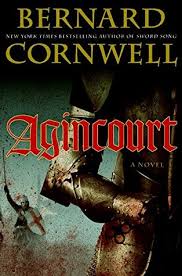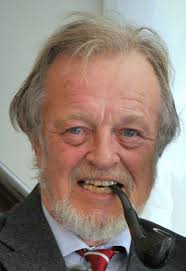Agincourt by Bernard Cornwell, USA, 2009
 Bernard Cornwell’s account of what happened at Agincourt on the 25th October 1415 is overwhelming, to say the least. This is not a happy read: the descriptions of fighting, slaughter, and torture as well as the cold, the rain, the mud, and the hunger are all exceedingly graphic. Initially I felt that Cornwell was perhaps wallowing in his descriptions of extreme violence; however, in spite of the fact that I was sickened by the number of people being speared through the eye or being viciously disembowelled, I eventually changed my mind.
Bernard Cornwell’s account of what happened at Agincourt on the 25th October 1415 is overwhelming, to say the least. This is not a happy read: the descriptions of fighting, slaughter, and torture as well as the cold, the rain, the mud, and the hunger are all exceedingly graphic. Initially I felt that Cornwell was perhaps wallowing in his descriptions of extreme violence; however, in spite of the fact that I was sickened by the number of people being speared through the eye or being viciously disembowelled, I eventually changed my mind.
Agincourt is, as far as I can tell, a truthful account of King Henry V’s attempt to be acknowledged as king of France as well as England. He was completely sure that God was on his side, and it was this certainty that drove him first to take Harfleur and then, with a diminished army, to confront the exceedingly large French army (five times larger than the English force) at Agincourt. Had Cornwell merely skimmed over the battle scenes and all related scenes of violence, the impact would have been very different – possibly similar to reading a history book. Instead, Cornwell has managed to bring to life several dreadful battles, impressing on the reader the horror, the loss of life, and the futility.

The book has been beautifully researched, and it gives a true-to-life picture not only of the battles but also of everyday life in early fifteenth-century England and France. Religion made tangible in its priests, saints, beliefs, and superstitions is vital to the story, and the two saints, Crispin and Crispinian, play an important part. The story centres around Nicholas Hook, an archer, and we follow him from London, where he has a death sentence hanging over his head for hitting a priest, to the battlefields of France. 
The frightening thing about this book is that it shows how, six hundred years on, nothing has really changed. The weapons may be more sophisticated, but men fight and die for the same idiotic, selfish causes. The human race may well have made great strides when it comes to technology, architecture, and medicine, but when it comes to human beings themselves we are unfortunately still standing in the same place where we were standing more than six hundred years ago.
The photo of Bernard Cornwell is from wikipedia and the image of Agincourt is from the Telegraph.